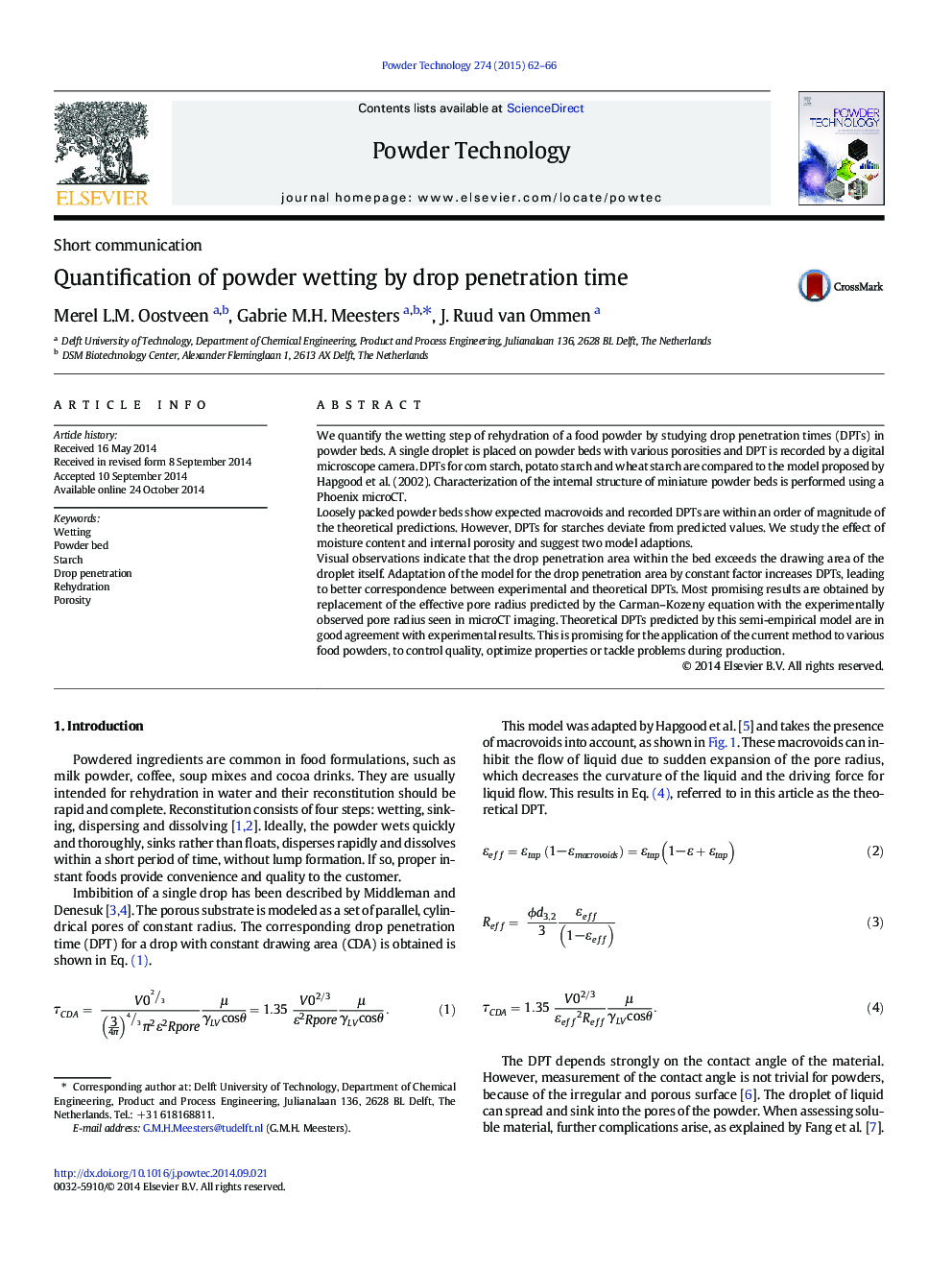| کد مقاله | کد نشریه | سال انتشار | مقاله انگلیسی | نسخه تمام متن |
|---|---|---|---|---|
| 235699 | 465645 | 2015 | 5 صفحه PDF | دانلود رایگان |
• Wetting of three types of starch studied by drop penetration time
• Hapgood et al. (2002) model poorly predicts drop penetration times for these powders.
• Model predictions are strongly improved by using pore radii from microCT imaging.
We quantify the wetting step of rehydration of a food powder by studying drop penetration times (DPTs) in powder beds. A single droplet is placed on powder beds with various porosities and DPT is recorded by a digital microscope camera. DPTs for corn starch, potato starch and wheat starch are compared to the model proposed by Hapgood et al. (2002). Characterization of the internal structure of miniature powder beds is performed using a Phoenix microCT.Loosely packed powder beds show expected macrovoids and recorded DPTs are within an order of magnitude of the theoretical predictions. However, DPTs for starches deviate from predicted values. We study the effect of moisture content and internal porosity and suggest two model adaptions.Visual observations indicate that the drop penetration area within the bed exceeds the drawing area of the droplet itself. Adaptation of the model for the drop penetration area by constant factor increases DPTs, leading to better correspondence between experimental and theoretical DPTs. Most promising results are obtained by replacement of the effective pore radius predicted by the Carman–Kozeny equation with the experimentally observed pore radius seen in microCT imaging. Theoretical DPTs predicted by this semi-empirical model are in good agreement with experimental results. This is promising for the application of the current method to various food powders, to control quality, optimize properties or tackle problems during production.
Figure optionsDownload as PowerPoint slide
Journal: Powder Technology - Volume 274, April 2015, Pages 62–66
